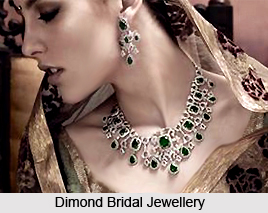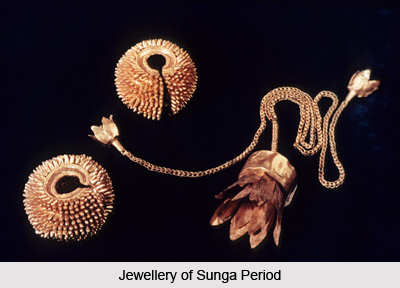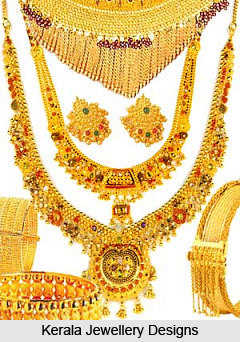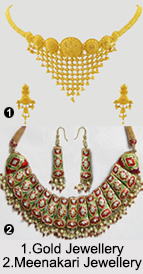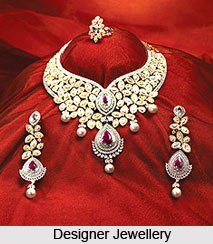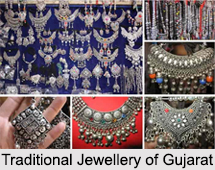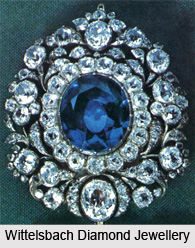 A diamond is a maker of manifestation that causes the world to hold breath once in a while. One such maker of manifestation stone is the famous blue Wittelsbach that reappeared in 1962, nearly thirty years after it had tripped into ambiguity.
A diamond is a maker of manifestation that causes the world to hold breath once in a while. One such maker of manifestation stone is the famous blue Wittelsbach that reappeared in 1962, nearly thirty years after it had tripped into ambiguity.
The Wittelsbach has been especially singled out for its exceptional blue color and is considered to be one at the most famous diamonds in history. This luminous stone intricately cut with 50 facets and weighs 35.50 carats. It is arranged in an asymmetrical pattern with its 50 facets. The stone is unblemished except for a few fine scratches that have almost certainly been caused due to its constant resetting and use.
Diamonds have been regarded as symbols of power and desire no matter what color it holds.During his travels to India Jean-Baptiste Tavernier discovered introduced colored diamonds, to the courts of Europe at some stage in the 17th century. A new sunburst of colors to the existing gamut of colored stones occurred with the additions of these gems. To compare with the rare colored diamonds like red, blue and green to their colored stone counterparts, such as ruby, sapphire and emerald, it is impracticable. A level of brilliance and dispersion (separation of white light into spectral colors) that Diamonds own, but colored gems do not have.
Among all of colored diamonds, natural fancy blue diamonds are the rare of all. A steely cast which blue diamonds usually have, covers a vast range of qualities. Therefore, it became truly extraordinary when an intense blue gem facades. Blue diamonds in the coarse are generally uneven in shape. It also has an irregular color zoning. The potential of a particular stone can fully realized with only the swiftness of the cutter and so, any natural fancy colored diamond in the world market without doubt fetches record high prices. These inestimable gifts of the earth enjoy a certain indefinable glamour, which makes them seem magical and unique. A diamond, pertinently described, as a "drop of frozen light", in spite of countless mishaps and catastrophes, remains inviolate and never-ending, casting its glittering spell on mankind through the ages.
The recorded history of this Golconda origin, intense blue stone, floats through several marbled palaces of Europe and begins in Spain. The Wittelsbach was a gift from a father to a daughter as a wedding gift, Philip IV of Spain to his fifteen-year-old daughter, the Infanta Margareta Teresa, when she married Emperor Leopold 1 of Austria in 1664. All records of the gem prior to this wedding were lost unluckily. It was the time of 1936-39, when the Madrid archives were destroyed during the Spanish Civil War. Margareta`s jewels passed to her husband, Leopold After her untimely death in 1675. The entry about the Wittelsbach reads, "Diamond ornament... consisting of... a large brooch with a Great Blue Diamond in the centre, to which belongs a bow-shaped jewel set with rubies."
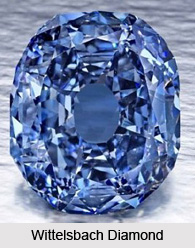
After Margareta`s death Leopold later remarried twice. But gave his Spanish inheritance to his third wife, Empress Eleonore Magdalena. She lived longer than the emperor and when she died in 1721, she bestowed the Great Blue Diamond to her grand daughter, the Archduchess Maria Amelia.
In 1722 when Amelia married the Bavarian Crown Prince, Charles Albert, the glistening blue go aboard on the next stage of its journey as part of her dowry. Later it came to be selected the family diamond of the Wittelsbach, the ruling house of Bavaria. Afterwards it keeps hold of its esteemed position till the renunciation of the last king in 1918.
After the overgenerous wedding festivities were over, Elector Maximilian Emmanuel, the father of the crown prince, found himself in a financial predicament. Along with a golden dinner service to a banker named Oppenheim, he pledged the Wittelsbach diamond, but the Elector died soon after and the task of recompensing this amount fell on his son and heir.
Louis III was the last king of Bavaria to wear the Wittelsbach, who was in power till 1918. At that time Germany became a republic. The beautiful stone, which had been the family heirloom for nearly two centuries in the year 1921when Louis III died, adorned the king for the very last time during his funeral.
The riches of the Wittelsbachs were managed by a trust that remunerated the members of the erstwhile royal family a few years after the First World War took place. The state decided that a certain part of the crown jewels of the Wittelsbachs could be sold after finding the family in a financially distressed condition. The popular role of auctioneers of the Bavarian Crown Jewels went to Christie`s and he announced the sale back in the year 1931. A mysterious buyer under an assumed name, Thorp, bought the Wittelsbach for £5,400.
From then on, it is difficult to understand the trail of the Wittelsbach. Joseph Komkommer, a luminary of the Belgium diamond industry in 1962, was consulted about an old stone that was to be reset. After he lifted the fiery blue gem out of its creamy box, he realized immediately that he was holding in his palm a precious artifact. Along with the help of his son, Jacques Komkommer, he legitimated the diamond as the lost Wittelsbach. A syndicate of diamond merchants from Belgium and the United States of America was formed by him and purchased the beautiful gem for £180,000. According to the grapevine, the Wittelsbach had been part of an estate held in trust. And of course the identity of the true owner was kept a secret. In 1964, a private bought collector, the stone and after its many alliances with sovereigns and international gem moguls, a more private phase in its history began.


